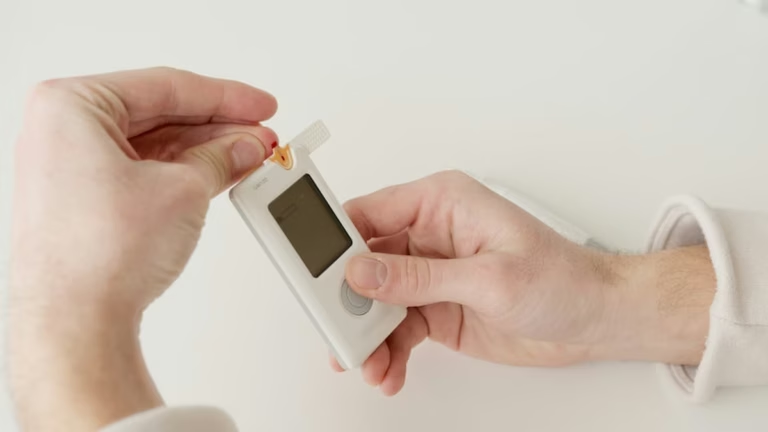Understanding and Preventing Osteoporosis: Tips for Building Strong Bones in 2025
What is Osteoporosis and Why Does It Matter?
Osteoporosis is a disease characterized by low bone density and structural deterioration of bone tissue, leading to increased fragility and a higher risk of fractures. Essentially, your bones become weak and brittle, making them more susceptible to breaking. While it can affect anyone, it’s most common in older adults, especially women after menopause.
Why does it matter? Fractures from osteoporosis can lead to chronic pain, disability, and even decreased quality of life. Hip fractures, in particular, can be devastating, often requiring surgery and a long recovery period. Preventing osteoporosis is crucial for maintaining mobility, independence, and overall well-being as you age.
Understanding the Risk Factors
Several factors can increase your risk of developing osteoporosis. Knowing these risk factors allows you to take proactive steps to mitigate them.
Non-Modifiable Risk Factors
- Age: Bone density naturally decreases with age.
- Gender: Women are more likely to develop osteoporosis than men, especially after menopause due to the decline in estrogen.
- Family History: Having a parent or sibling with osteoporosis increases your risk.
- Race: People of Caucasian and Asian descent are at higher risk.
- Body Size: Individuals with small body frames tend to have less bone mass.
Modifiable Risk Factors
- Diet: A diet low in calcium and vitamin D contributes to bone loss.
- Physical Inactivity: Lack of weight-bearing exercise weakens bones.
- Smoking: Smoking interferes with bone formation and increases bone loss.
- Excessive Alcohol Consumption: Heavy drinking can impair bone health.
- Certain Medications: Some medications, such as corticosteroids, can weaken bones.
Building Strong Bones: A Proactive Approach for 2025
The good news is that osteoporosis is largely preventable. By adopting healthy lifestyle habits, you can significantly reduce your risk and build strong bones for a healthier future.
Dietary Strategies for Bone Health
A well-balanced diet rich in calcium and vitamin D is essential for bone health.
- Calcium: Aim for 1000 mg of calcium per day for adults under 50 and 1200 mg per day for adults 50 and older. Good sources include dairy products (milk, yogurt, cheese), leafy green vegetables (kale, spinach), fortified foods (cereals, plant-based milk), and canned salmon with bones.
- Vitamin D: Vitamin D helps your body absorb calcium. Aim for 600 IU (International Units) per day for adults under 70 and 800 IU per day for adults 70 and older. Sources include fatty fish (salmon, tuna, mackerel), fortified milk and cereals, and sunlight exposure. Consider a vitamin D supplement, especially during winter months or if you have limited sun exposure.
- Other Important Nutrients: Include foods rich in vitamin K, magnesium, and phosphorus in your diet.
The Power of Exercise
Regular exercise, especially weight-bearing and muscle-strengthening activities, is crucial for building and maintaining bone density.
- Weight-Bearing Exercises: These activities force your body to work against gravity, stimulating bone growth. Examples include walking, jogging, dancing, hiking, and stair climbing.
- Muscle-Strengthening Exercises: These exercises involve using weights or resistance to build muscle mass, which also helps strengthen bones. Examples include weightlifting, using resistance bands, and bodyweight exercises like squats and push-ups.
- Balance Exercises: These exercises can help prevent falls, which are a major cause of fractures in people with osteoporosis. Examples include Tai Chi, yoga, and balance training exercises.
Lifestyle Modifications for Bone Health
Making positive lifestyle changes can significantly impact your bone health.
- Quit Smoking: Smoking weakens bones and increases the risk of fractures.
- Limit Alcohol Consumption: Excessive alcohol intake can interfere with bone formation.
- Maintain a Healthy Weight: Being underweight can increase your risk of osteoporosis.
- Fall Prevention: Take steps to prevent falls, such as removing tripping hazards in your home, wearing appropriate footwear, and using assistive devices if needed.
Bone Density Screening
A bone density test, also known as a DEXA scan, measures the density of your bones and can help diagnose osteoporosis. The National Osteoporosis Foundation recommends that women age 65 and older and men age 70 and older get a bone density test. Younger individuals with risk factors should also consider getting screened. Talk to your doctor to determine if a bone density test is right for you.
Looking Ahead: Staying Informed in 2025
Staying informed about the latest research and recommendations regarding osteoporosis prevention is crucial. Consult with your doctor or a registered dietitian for personalized advice on diet, exercise, and lifestyle modifications. Take control of your bone health today and build a stronger, healthier future for yourself!
Investing in your bone health is an investment in your overall well-being. By adopting these strategies and staying proactive, you can significantly reduce your risk of osteoporosis and enjoy a more active and fulfilling life in 2025 and beyond.






